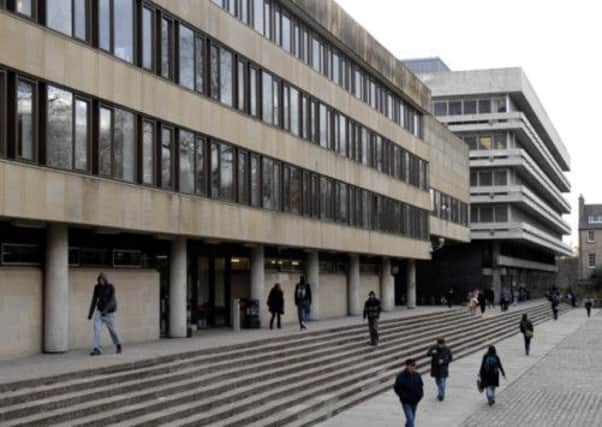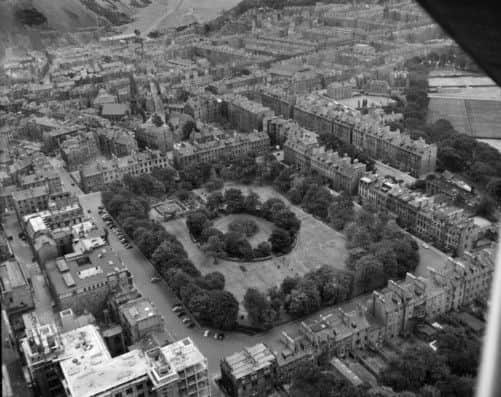Lost Edinburgh: George Square


George Square was originally laid out in 1766 within Edinburgh’s then burgeoning South Side district. Architect James Brown managed to purchase the land for just £1,200 from the city council in a bargain swoop that would go on to pay dividends in the long run. The naming of George Square was not regally derived, as is often thought, but was in fact a tribute to the architect’s elder brother.
Situated slightly north-east of today’s attractive Meadows parkland, the square’s creation marked one of the first major residential building projects intent on escaping the congested bedlam of Edinburgh’s Old Town. Prior to the new developments, the gentry and nobility of Edinburgh had been unenthusiastically confined to mingle with those straddling society’s lesser rungs. The New Town to the north of the city and George Square to the south would answer the cries for change which were emanating from the upper classes and create a divide that would ultimately see the Old Town of Edinburgh suffer from neglect. The square’s design template was one which would become familiar in the new vision for Scotland’s capital. George Square was an elegant example of new town planning far removed from the unpleasant urban squalor of the overcrowded Old Town. It was comprised of neat uniform-like terraced townhouses on all four sides that encompassed a spacious and beautifully kept private garden. In many ways, the new square was a sign of things to come and can be regarded as being a successful testing ground in preparation for the comparably larger-scale 18th century developments north of Princes Street which were based around strikingly similar design principles.
Advertisement
Hide AdAdvertisement
Hide AdSuffice to say, the development was a resounding success and by the end of the 1700s George Square had become one of the most fashionable addresses in the city. To be welcomed to a dinner party on the square was a clear indication that you had reached the pinnacle of high society within Edinburgh.


George Square remained virtually unaltered for over a century until the construction of Melville House initially created to accommodate George Watson’s Ladies’ College on the square’s north side in 1871. This shift towards an educational purpose would come to acutely define the square over the course of the next 100 years. In 1914 the nearby University of Edinburgh began to buy up property on George Square using it as student accommodation. By the middle of the century so much of George Square had been eaten up by the university that it increasingly resembled a campus. The biggest changes were yet to come however.
By the 1950s, the university was keen to modify the unique and generally untouched architectural fabric of George Square. Despite considerable opposition from heritage groups and the general public the university received the go ahead to undertake the controversial destruction of all but one side of the original 1766 square and a small handful of buildings located on its north-eastern edge. Between 1963 and 1970 several new university buildings went up including the Appleton Tower, David Hume Tower and the award-winning library block designed by acclaimed architect Sir Basil Spence.
George Square today is truly unrecognisable to its former self, yet thankfully it remains a pleasant area of the city. In 2006 both the David Hume Tower and the much-admired library building were protected with a Category-A listing. Interestingly, this designation has provided them with an architectural value and cultural significance equal to that of the remaining historic Georgian townhouses. The often divisive and volatile debate over whether the changes were necessary is certain to rage on long in to the future.
ELSEWHERE